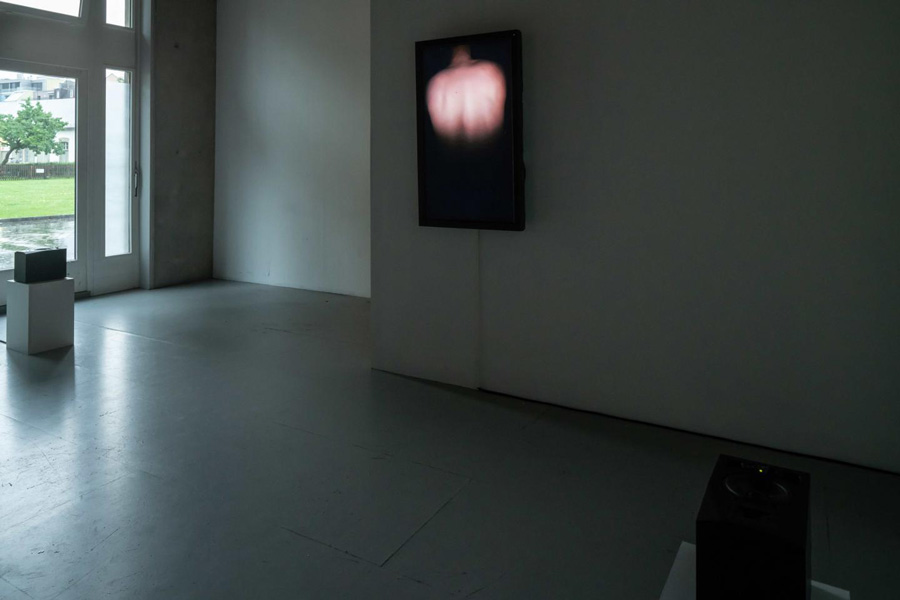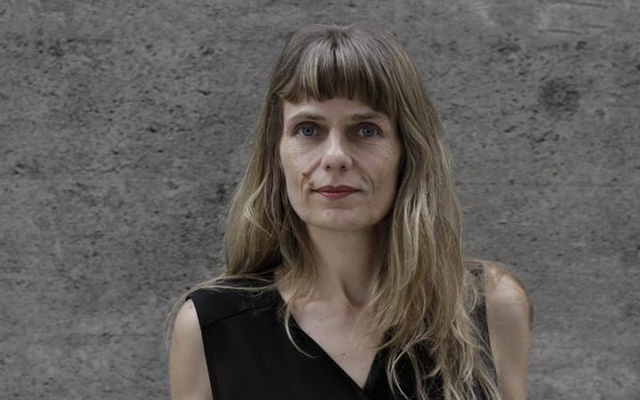Guggenheim Award ‘A Milestone’ for UC San Diego Professor Katharina Rosenberger
Department of Music composer will research relationship of movement and sound, premiering new composition as part of prestigious fellowship
Published Date
By:
- Anthony King
Share This:
Article Content
Katharina Rosenberger, a composer and professor in the University of California San Diego Department of Music, was awarded a 2019 Guggenheim Fellowship for a new collaboration that will investigate the relationship of body and movement to sound.
Much of Rosenberger’s work is interdisciplinary by nature — the fellowship will continue this, confronting traditional performance in terms of how sound is produced, heard and seen.
“In the light of dwindling support for the arts and humanities nationally, I am so grateful to the John Simon Guggenheim Memorial Foundation for making a real difference to so many artists, scholars and researchers,” Rosenberger said. “The fellowship will allow me to embark on an entirely new research of capturing sound and performance that’s technically complicated.”
During her time as a Guggenheim fellow, Rosenberger will collaborate with the Eastman School of Music-founded [Switch~ Ensemble] on “Up Close,” the working title of a project and composition for flute, clarinet, violin, cello, piano and percussion, utilizing microphones and live video processing.
[Switch~ ] is a 10-member ensemble dedicated to the creation and performance of new works that integrate technology and live musicians. Current Department of Music graduate students Madison Greenstone and Tyler J. Borden are core members, and will work with Rosenberger during the fellowship.
The project will explore new relationships between the body’s movement and sound by highly experimental uses of a variety of close-up and contact microphones. Rosenberger said she envisions attaching the microphones to the heads and wrists of vocalizing instrumentalists and even inside the individual instruments, collecting sound data that will have myriad of uses in both understanding the nuance of performance and in composition.
“By intensely amplifying very quiet sounds and minute details of the act of playing an instrument or singing, we enable the listeners to zoom into the intimate relationship of instrumental or vocal sounds to their physical articulation,” she said in the project overview. “The audience receives a unique insight into the virtuosic act of contemporary music making, [and] the amplification will offer me a rich palette of otherwise unheard sounds that I would like to incorporate into my composition.”

A partial installation view of Rosenberger's “quartet — bodies in performance,” which premiered during the 2018 Wittener Tage für Neue Kammermusik. (Photo by Lorenzo Pusterla)
For instance, Rosenberger will meet with individual performers to establish a “sonic catalogue” of the many ways to play an instrument. They will explore the subtle variations of plucking the strings of a violin, drawing the bow across a cello, or controlling airflow in a flute or clarinet.
“Having a microphone attached so closely to the source of sound production will reveal every instance of a sound’s evolution and highlight spectral properties or other acoustic phenomena impossible to perceive otherwise,” she said.
In tandem, Rosenberger will include a similar visual counterpoint, focusing on performance gestures — slight amplification of movement with musicians’ bodies — which will help the audience enhance the understanding of how sound is produce: cymbals or piano-strings vibrating, lips pursing on instruments. These extreme close-up images will be projected behind the players, in full view of the audience.
“The video is meant to complement the sonic landscape and direct the audience’s attention to possible relationships between what is seen and what is heard,” she said, “drawing the listener close to the act of musical performance.”
Workshops and intensive research will begin this summer at UC San Diego. In December 2019, Rosenberger will premiere a new composition for “Up Close” at the UC San Diego Conrad Prebys Music Center, followed by a concert at the Eastman School of Music in March 2020, and another in New York City.
The John Simon Guggenheim Memorial Foundation awards the annual fellowships to “individuals who have already demonstrated exceptional capacity for productive scholarship or exceptional creative ability in the arts.” Additional recent Guggenheim Fellows in the Division of Arts and Humanities include Nicole Miller, Department of Visual Arts (2018); Pinar Yoldas, Department of Visual Arts (2015); and Rand Steiger, Department of Music (2015).
Rosenberger said she was “flooded by messages” of congratulations when the fellowships were announced April 10, arriving in Los Angeles after a long flight from Europe. “It was an incredible, uplifting feeling, and I am still very much floating in a potpourri of them — thankfulness, blessing, honor, encouragement and pure joy,” she said.
Born in Zurich, Rosenberger holds a Master of Music from the Royal Academy of Music in London and a Doctor of Musical Arts in Composition from Columbia University. She joined the UC San Diego Department of Music in September 2008.
Rosenberger has a long list of compositions, installations and honors. Her installation work “VIVA VOCE” and “Room V” were awarded the “Mediaproject Award” / Sitemapping of the Swiss Federal Agency in Berne, and the video-sound installation “quartet — bodies in performance” and “surge” premiered at the 2018 Wittener Tage für neue Kammermusik in Germany. Performances of her work are already scheduled to appear this year in the United States, Ireland, Russia, Switzerland and Poland.
“It is an incredible encouragement and push to keep going, to always expose myself to new ideas and challenges, to dare, to fail and then make it better, and to think forward both independently as well as within a team of collaborators,” she said. “This award is a milestone in my artistic career.”
Share This:
Stay in the Know
Keep up with all the latest from UC San Diego. Subscribe to the newsletter today.




